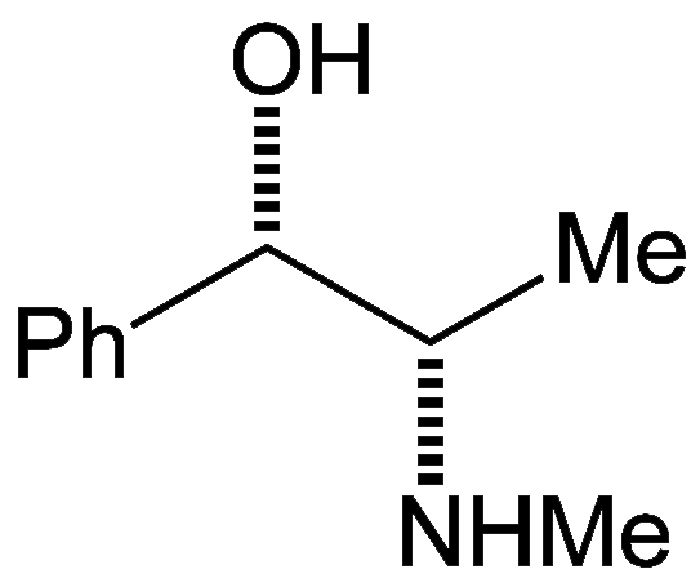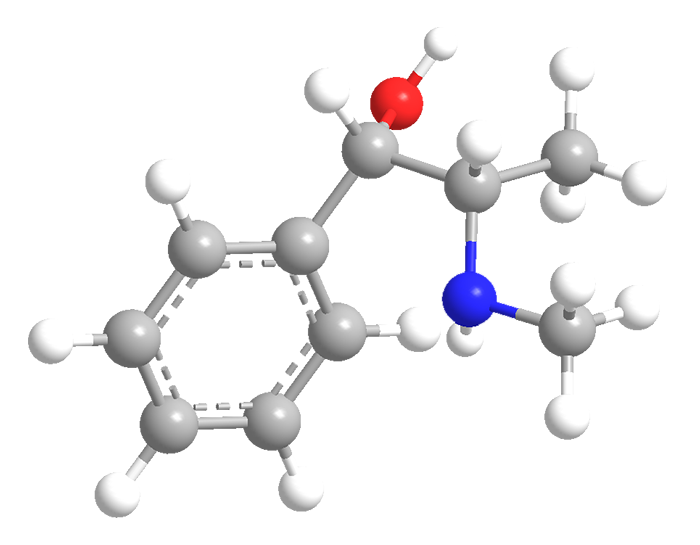What molecule am I?


Pseudoephedrine is an over-the-counter medication that has three sides: the good, the bad, and the ugly. It is a diastereomer of ephedrine, meaning that it has the same basic structure, but its atomic arrangement is different at one of the two stereogenic centers. Pseudoephedrine exists as two enantiomers; the one used commercially is the (1S,2S)-form that is shown in the images.
Pseudoephedrine was first known as a natural substance that occurs in shrubs of the Ephedra genus, which grow worldwide. Almost all commercial pseudoephedrine, however, is produced by fermenting dextrose in the presence of benzaldehyde. The primary product, (R)-phenylacetylcarbinol, is aminated to make pseudoephedrine.
What does pseudoephedrine do, and what are its downsides?
- The good: Pseudoephedrine is an effective nasal and sinus decongestant. It is also a stimulant, especially for preventing sleep. It is sold alone and in mixtures under many brand names, including the sound-alike Sudafed.
- The bad: Because it is a stimulant, it has several adverse effects, such as insomnia, anxiety, and hypertension. It is contraindicated for many patients.
- The ugly: Pseudoephedrine is easily converted to methamphetamine, the recreational drug also known as meth. As a result, government agencies have increasingly restricted its sale over the past 10 years. Some retailers restrict it even more in terms of the quantities they sell and the customer’s age.
Some good news: A recent study showed that since restrictions went into effect, the use of methamphetamine has declined.

Learn more about this molecule from CAS, the most authoritative and comprehensive source for chemical information.
Molecule of the Week needs your suggestions!
If your favorite molecule is not in our archive, please send us a message. The molecule can be notable for its current or historical importance or for any quirky reason. Thank you!
Stay Ahead of the Chemistry Curve
Learn how ACS can help you stay ahead in the world of chemistry.

